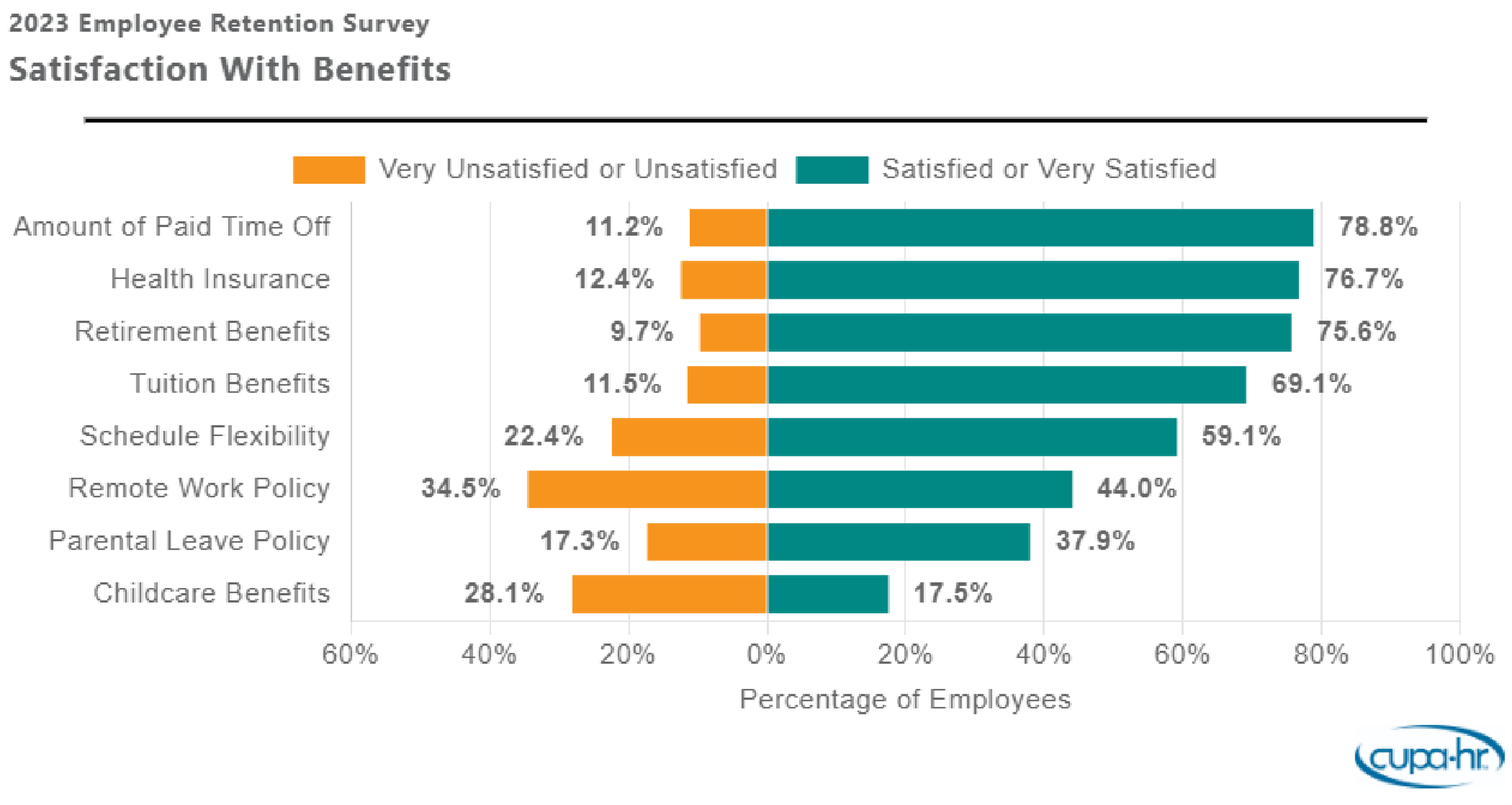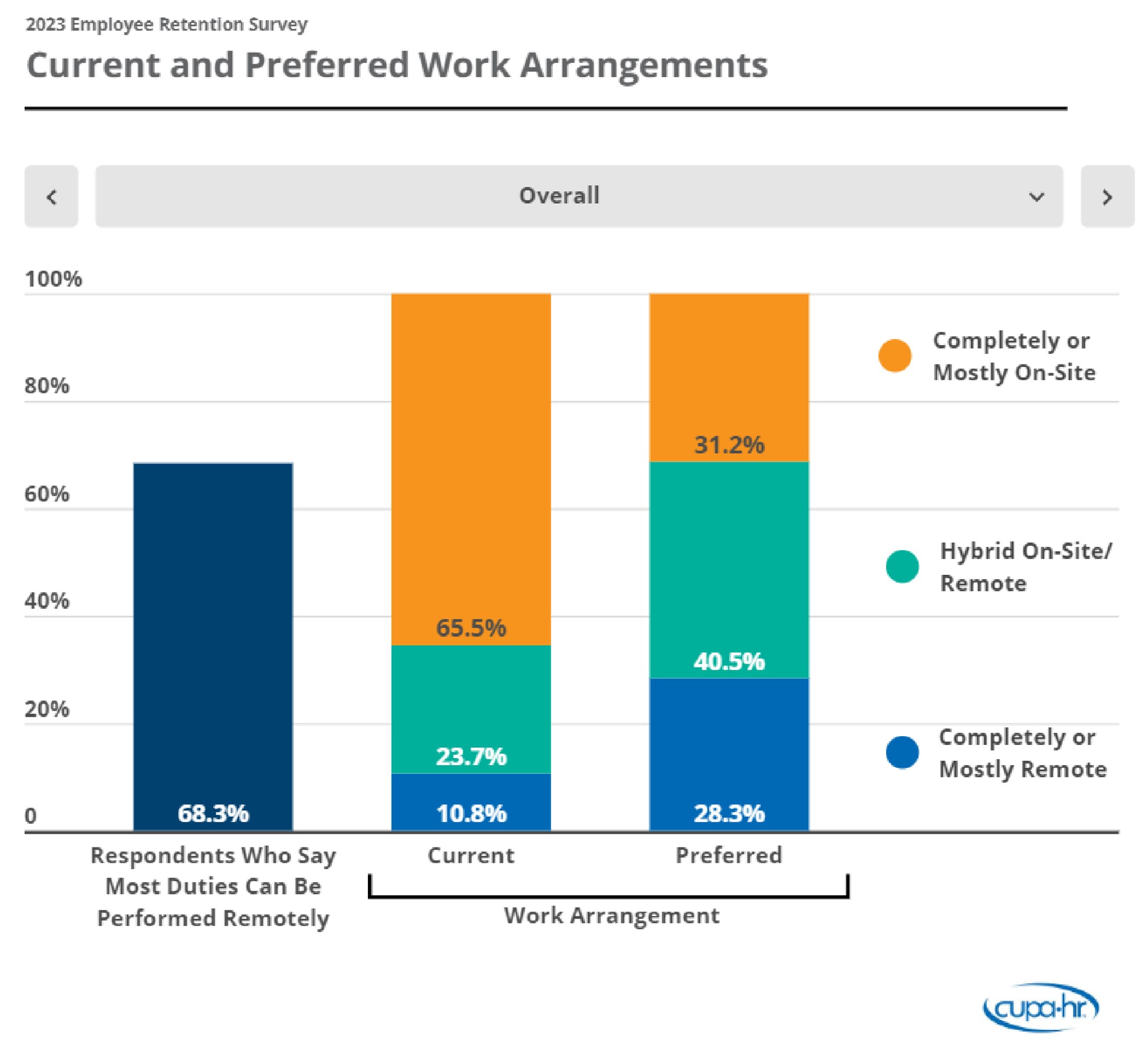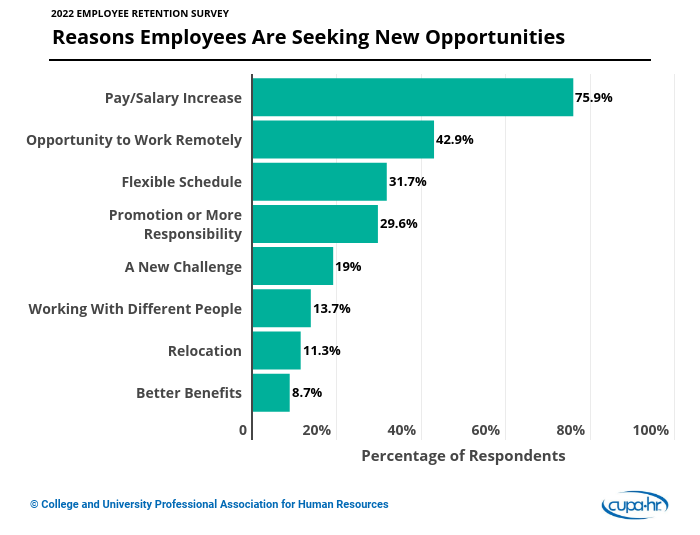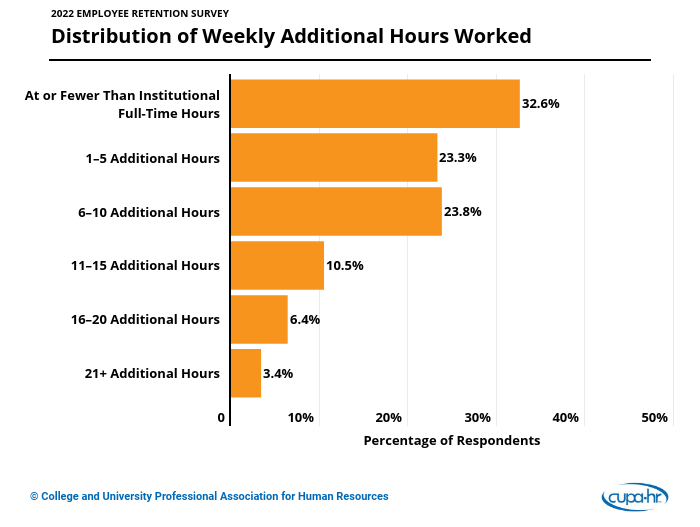by CUPA-HR | September 19, 2023
Given the number of employees who successfully executed their work remotely at the height of the pandemic, it may come as no surprise that a substantial gap exists between the work arrangements that higher ed employees want and what institutions offer. According to the new CUPA-HR 2023 Higher Education Employee Retention Survey, although two-thirds of employees state that most of their duties could be performed remotely and two-thirds would prefer hybrid or remote work arrangements, two-thirds of employees are working completely or mostly on-site.
Inflexibility in work arrangements could be costly to institutions and contribute to ongoing turnover in higher ed. Flexible work is a significant predictor of employee retention: Employees who have flexible work arrangements that better align with their preferences are less likely to look for other job opportunities.
Flexible Work Benefits: A No-Brainer for Retention
While more than three-fourths of employees are satisfied with traditional benefits such as paid time off and health insurance, survey respondents were the most dissatisfied with the benefits that promote a healthier work-life balance. These include remote work policies and schedule flexibility, as well as childcare benefits and parental leave policies.
Most employees are not looking for drastic changes in their work arrangements. Even small changes in remote policies and more flexible work schedules can make a difference. Allowing one day of working from home per week, implementing half-day Fridays, reducing summer hours and allowing employees some say in their schedules are all examples of flexible work arrangements that provide employees some autonomy in achieving a work-life balance that will improve productivity and retention.

A more flexible work environment could be an effective strategy for institutions looking to retain their top talent, particularly those under the age of 45, who are significantly more likely not only to look for other employment in the coming year, but also more likely to value flexible and remote work as a benefit. Flexible work arrangements could also support efforts to recruit and retain candidates who are often underrepresented: the survey found that women and people of color are more likely to prefer remote or hybrid options.
Three Things You Can Do
- Use Data to Make a Case for Change. The CUPA-HR 2023 Higher Education Employee Retention Survey provides multiple data points that support remote, hybrid and flexible work for the retention and recruitment of top talent.
- Explore CUPA-HR Resources. Discover best practices and policy models for navigating the challenges that come with added flexibility, including managing a multi-state workforce:
- Remember the Two-Thirds Rule. In reevaluating flexible and remote work policies, remember: Two-thirds of higher ed employees believe most of their duties can be performed remotely and two-thirds would prefer hybrid or remote work arrangements, yet two-thirds are compelled to work mostly or completely on-site.
You may also be interested in:



